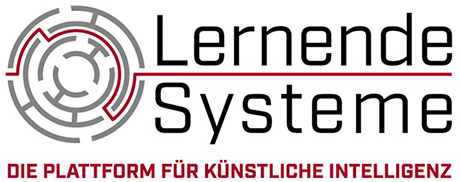
Mr Löser, many SMEs still have some catching up to do when it comes to digitization. To what extent is AI already an issue for them?
Alexander Löser: That depends on the value chain to which an SME wants to contribute or which it may already control in part or in full. It always becomes exciting when an SME has already "occupied" part of the value chain and wants to expand to the "left" or "right". An example from medicine: Hospitals currently control the flow of patients as soon as they arrive at the emergency room. But why do they appear there? This is where providers of apps or devices that people use to survey their symptoms of illness come in. The app advises them to visit the emergency department for this or that symptom, now or later, or else to book a telemedicine consultation. In other countries - with less regulation and health services that are too expensive for many people - the app can also advise them to "just" buy a medicine. The provider of this app thus manages patients across the entire value chain - from symptom collection to diagnosis, treatment, rehabilitation, and lifestyle. This can lead to "classic" medical service providers losing revenue or to certain, for example, lucrative cases being diverted - depending on the margin the health app provider is planning.
In Europe, we should explore AI technologies for such applications - ideally with our strong German partners in the healthcare system - in order to have sufficient sovereignty in the future. The Data Science research center at Beuth University has proposed a corresponding use case for the European cloud alternative GAIA-X: deep patient representation for differential diagnosis. We are happy to present our work in Clinical Deep Learning to interested partners.
Manufacturing SMEs have previously unused data in their operations. How do they turn this data into value-added data products and services?
Alexander Löser: There are numerous well-tested methods and "construction kits" for this, which we use ourselves in consulting with our partners. One of the first steps is to analyze the value chain and identify worst-case scenarios, pain points, and key performance indicators (e.g., revenue, growth, customer satisfaction) that need to be optimized for the company. The next step also has nothing to do with AI yet: Defining the target markets. Are we talking about a hundred to a thousand customers for a data product or platform - or hundreds of thousands? Is it a transaction-based business model or do we need to build a community for an innovation platform and corresponding business models?
Only after it is clear where the exact and preferably scalable benefit lies for the top 5 data product ideas, do we move on to the technical implementation: What are the core business objects that we should represent in an AI system? Then we should start translating the benefits in value creation into maximizable benefit functions. For example, in the example given at the beginning, patients (and their symptoms) could be mapped to diseases and possible urgencies. This often boils down to a classification whose input variables are the business objects. Other methods include time series analysis, clustering, or even multi-task learning. The strength of AI lies in combinatorial power - the ability to smartly calculate the probability of the best matches quickly. Another trick is to strengthen the often incomplete representation. And finally, feedback loops need to be taken into account - after all, our model should continuously improve.
What challenges do SMEs face when adopting AI - and how can they address them?
Alexander Löser: The challenges are similar to many other projects: Data products are risky. We often don't know whether a customer request is feasible until the training data is available. Therefore, AI implementation needs money, talent and time - about twelve months for the first data product when there is no experience yet. It also needs a willingness to fail and move on, as well as support and trust from top management. For many German companies, this is more of a marathon than a sprint. Many don't trust themselves to do it or don't even see the starting points. Others have them on their radar, but trust in their well-run sales and production processes and therefore see no need for major seven- or even eight-figure investments.
The Data Science research center at Beuth University in Berlin is working in the BMWi-funded Servicemeister project with a portfolio of companies typical of Germany (e.g., Krohne, Wirth, Atlas Corpco, Trumpf, KEB) that understand all of the above mechanisms and value chains with AI very well. Probably the biggest challenge is to produce data products for small and medium B2B markets. In terms of organization, this requires a smart approach to data engineering and the lowest possible dependencies on existing IoT platforms that could turn the price screw. Technologically interesting here are approaches in which the development process of an AI model is largely carried out by AI-based machines - and does without expensive human data engineers.
In addition to basic research, transfer to companies is a crucial issue in AI. It is precisely this duality that we need even more of in Germany. I would therefore very much like to see not only universities but also universities of applied sciences, which are particularly strong in research, being able to benefit from the funding for the AI centers, which are currently doing outstanding work in basic research and the transfer of AI.
More information on the topic of AI for SMEs can be found on the website www.ki-und-kmu.de of Plattform Lernende Systeme.
